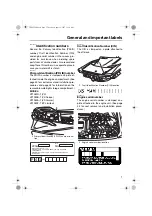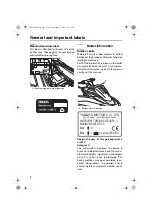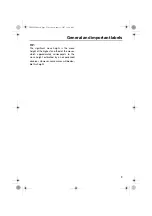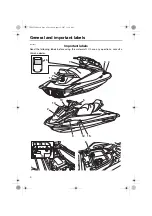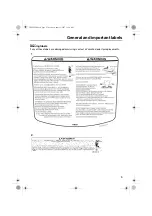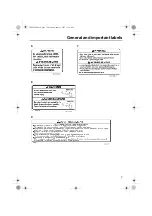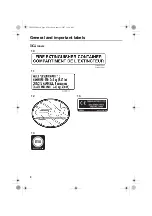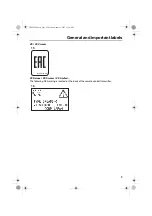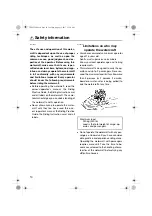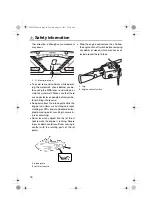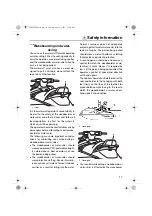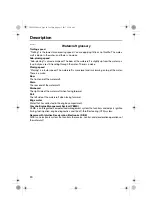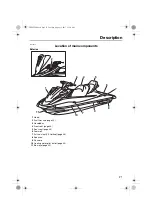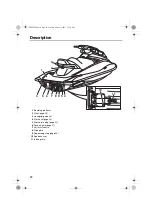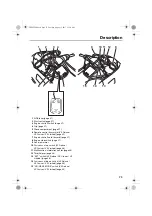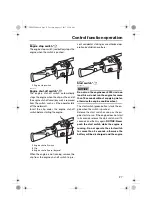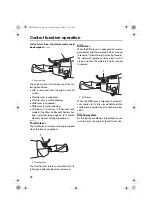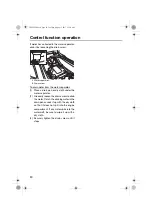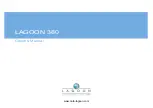
Safety information
15
EJU43620
Hazard information
Never start the engine or let it run for any
length of time in an enclosed area. Exhaust
fumes contain carbon monoxide, a color-
less, odorless gas that may cause loss of
consciousness and death within a short
time. Always operate the watercraft in an
open area.
Do not touch the hot oil tank, muffler, or en-
gine during or immediately after engine op-
eration; they can cause serious burns.
Do not place magnets or objects with a
strong magnetic force near the throttle le-
ver or RiDE lever. The electronic throttle
mechanism of the levers can be adversely
affected, which could cause loss of control.
In addition, do not place objects suscepti-
ble to magnetic forces (i.e., credit cards,
watches, etc.) close to the throttle lever or
RiDE lever.
EJU42415
Watercraft characteristics
Jet thrust turns the watercraft. Releasing
the throttle lever completely produces only
minimum thrust. If you are traveling at
speeds above trolling, you will have rapidly
decreasing ability to steer without throttle.
This model is equipped with the Yamaha
Engine Management System (YEMS) that
includes an off-throttle steering (OTS) sys-
tem. It will activate at planing speeds
should you attempt to steer the watercraft
after releasing the throttle lever. The OTS
system assists in turning by continuing to
supply some thrust while the watercraft is
decelerating, but you can turn more sharp-
ly if you apply throttle while turning the han-
dlebars.
The OTS system does not function below
planing speeds or when the engine is off.
Once the engine slows down, the water-
craft will no longer turn in response to han-
dlebar input until you apply throttle again or
you reach trolling speed.
Practice turning in an open area without
obstacles until you have a good feel for this
maneuver.
This watercraft is water-jet propelled. The
jet pump is directly connected to the en-
gine. This means that jet thrust will produce
some movement whenever the engine is
running and the “F” (forward) or “R” (re-
verse) shift indicator is displayed. When the
“N” (neutral) shift indicator is displayed, the
forward and reverse thrust are balanced to
help keep the watercraft from moving in ei-
UF4G72E0.book Page 15 Tuesday, August 1, 2017 11:30 AM

